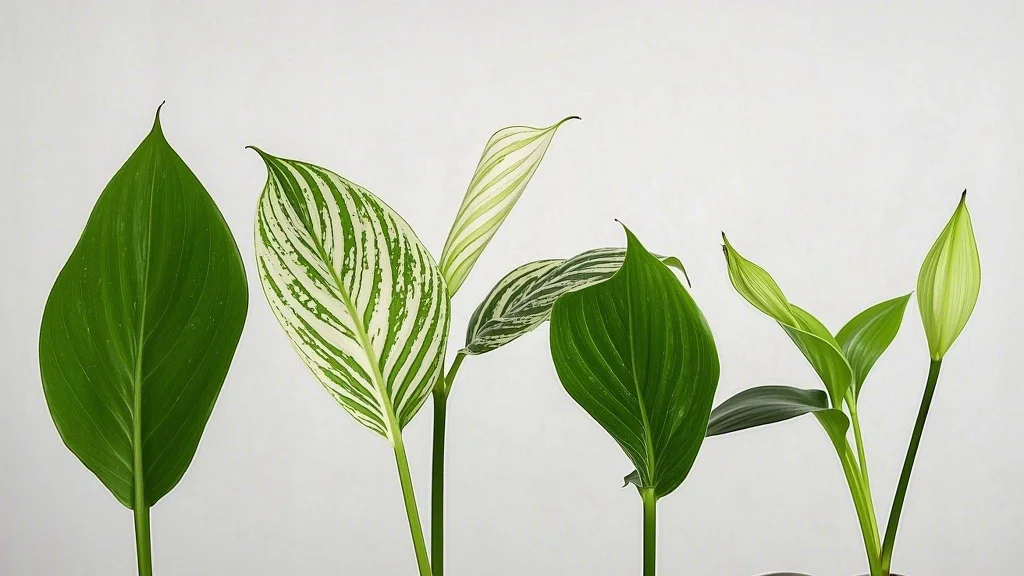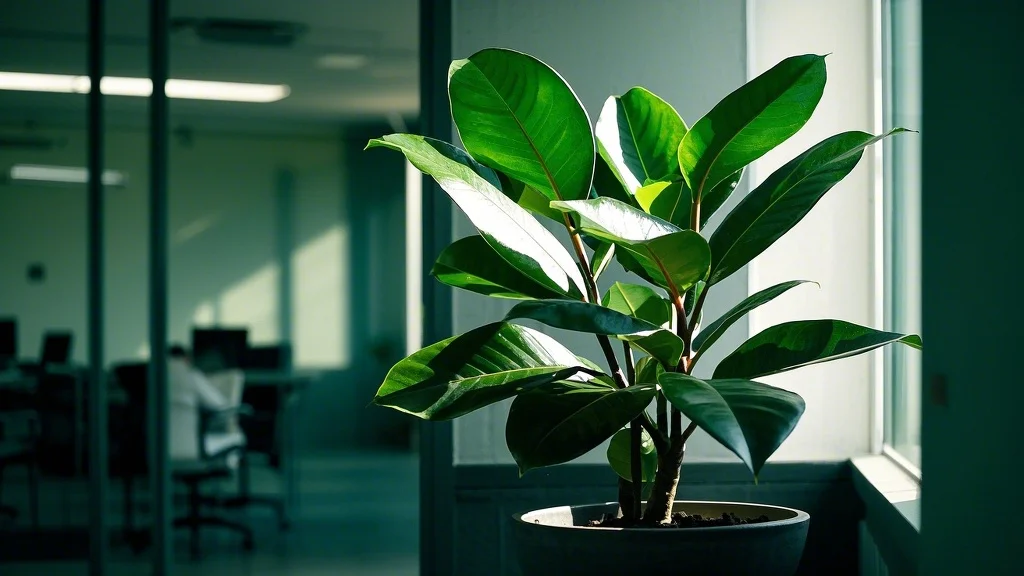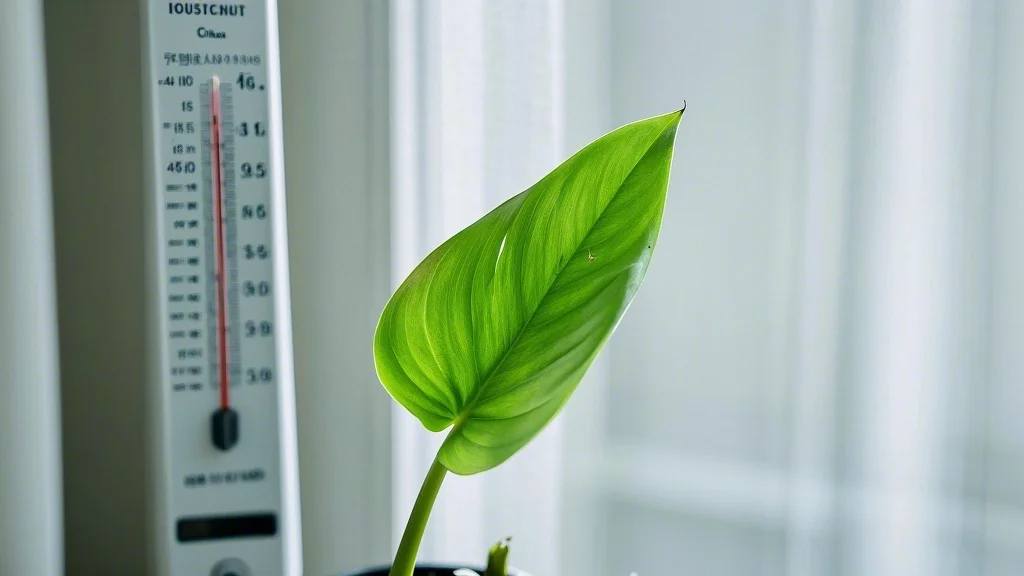Peace lilies (Spathiphyllum) are beloved houseplants known for their elegant white blooms and lush green foliage. These tropical beauties are not only aesthetically pleasing but also excellent air purifiers, making them perfect for urban apartment dwellers concerned about indoor air quality. In this comprehensive guide, we’ll explore everything you need to know about peace lily care to help your plant thrive and produce its iconic flowers.
Contents
Understanding the Peace Lily
Origin and Natural Habitat
Native to tropical regions of the Americas and Southeast Asia, peace lilies are accustomed to growing in the understory of rainforests. This background explains their preference for humid environments and filtered light, conditions we’ll aim to replicate in our homes.
Appearance and Varieties

Peace lilies are characterized by their dark green, oval leaves and distinctive white flowers, which are actually modified leaves called spathes. While the standard peace lily is the most common, there are several varieties available:
- Spathiphyllum ‘Mauna Loa Supreme’: A larger variety with broader leaves
- Spathiphyllum ‘Domino’: Features variegated foliage with white streaks
- Spathiphyllum ‘Sensation’: The largest peace lily variety, reaching up to 6 feet tall
- Spathiphyllum ‘Petite’: A compact variety perfect for small spaces
Peace Lily Care Essentials
Light Requirements
Peace lilies are adaptable to various light conditions, but they thrive best in bright, indirect light. Here’s what you need to know:
- Ideal location: Near a north or east-facing window
- Avoid direct sunlight: This can scorch the leaves
- Low light tolerance: Peace lilies can survive in lower light, but may not bloom as frequently
- Artificial light: If natural light is limited, supplement with grow lights
Watering
Proper watering is crucial for peace lily care. These plants prefer consistently moist soil but are susceptible to root rot if overwatered.
- Frequency: Water when the top inch of soil feels dry
- Method: Water thoroughly until it drains from the bottom of the pot
- Signs of overwatering: Yellowing leaves, wilting despite moist soil
- Signs of underwatering: Drooping leaves, dry soil
- Water quality: Use room temperature, filtered water if possible
Pro tip: Peace lilies are dramatic plants that will visibly droop when thirsty. This makes them excellent plants for beginners learning to read plant needs.
Humidity
As tropical plants, peace lilies appreciate high humidity. Here are some ways to increase humidity:
- Misting: Regularly mist the leaves with water
- Pebble tray: Place the pot on a tray filled with water and pebbles
- Humidifier: Use a room humidifier near the plant
- Grouping: Place several plants together to create a microclimate
Temperature
Peace lilies prefer warm temperatures similar to those in most homes:
- Ideal range: 65-80°F (18-27°C)
- Minimum temperature: 55°F (13°C)
- Avoid drafts: Keep away from air conditioning vents and cold windows
Soil and Potting
The right soil mix is essential for healthy peace lilies:
- Soil type: Well-draining, rich potting mix
- DIY mix: Combine equal parts potting soil, peat moss, and perlite
- pH level: Slightly acidic, between 5.8 and 6.5
- Repotting: Every 1-2 years or when roots start growing through drainage holes
Fertilizing
Peace lilies are not heavy feeders, but regular fertilization can promote growth and blooming:
- Frequency: Monthly during the growing season (spring and summer)
- Type: Balanced, water-soluble fertilizer (10-10-10)
- Application: Dilute to half-strength to avoid fertilizer burn
- Winter care: Reduce or stop fertilizing during dormancy
Encouraging Blooms
The iconic white flowers are a major draw for peace lily enthusiasts. Here’s how to encourage blooming:
- Provide adequate light: Bright, indirect light is crucial for flower production
- Maintain consistent care: Regular watering and fertilizing support blooming
- Allow for slight crowding: Peace lilies tend to bloom more when slightly root-bound
- Be patient: Blooming typically occurs in spring and summer
- Remove spent blooms: This encourages the plant to produce more flowers
Common Peace Lily Problems and Solutions
Pests
While generally resistant to pests, peace lilies can occasionally face infestations:
- Spider mites: Tiny pests that cause stippling on leaves
- Solution: Increase humidity and treat with neem oil
- Mealybugs: White, cottony insects that cluster on stems and leaves
- Solution: Remove with a cotton swab dipped in rubbing alcohol
- Scale: Small, brown, shell-like insects on stems and leaves
- Solution: Scrape off gently and treat with horticultural oil
Diseases
Peace lilies are relatively disease-resistant, but can be affected by:
- Root rot: Caused by overwatering or poor drainage
- Solution: Improve drainage, reduce watering, and repot if necessary
- Leaf spot: Brown or black spots on leaves due to fungal infection
- Solution: Remove affected leaves and improve air circulation
Brown Leaf Tips
A common issue with peace lilies, often caused by:
- Overfeeding: Reduce fertilizer application
- Low humidity: Increase humidity around the plant
- Chlorine in water: Use filtered or distilled water
- Salt buildup: Flush the soil occasionally with distilled water
Yellowing Leaves
Yellow leaves can indicate several issues:
- Overwatering: Allow soil to dry between waterings
- Nutrient deficiency: Ensure proper fertilization
- Aging: Normal for older leaves; remove them to encourage new growth
Propagation
Propagating peace lilies is a great way to expand your collection or share with friends:
- Division method:
- Gently remove the plant from its pot
- Separate the root ball into smaller sections, each with several leaves
- Repot each section in fresh potting mix
- Water thoroughly and maintain high humidity until established
- Offset method:
- Look for small plantlets (offsets) growing at the base of the mother plant
- Carefully separate these with a clean, sharp knife, ensuring each has some roots
- Pot the offsets in small containers with fresh potting mix
- Keep the soil moist and maintain high humidity until new growth appears
Peace Lilies as Air Purifiers

Peace lilies are renowned for their air-purifying abilities, making them excellent choices for urban dwellers concerned about indoor air quality. According to NASA’s Clean Air Study, peace lilies can remove several common indoor pollutants:
- Benzene
- Formaldehyde
- Trichloroethylene
- Xylene
- Ammonia
To maximize air purification:
- Place peace lilies in areas with poor air circulation
- Use multiple plants throughout your living space
- Ensure proper care to keep the plant healthy and actively filtering
Decorating with Peace Lilies
Peace lilies are versatile plants that can enhance various interior design styles:
- Modern minimalism: Place a single large peace lily in a sleek, white pot as a focal point
- Tropical oasis: Group with other tropical plants for a lush, jungle-like feel
- Zen retreat: Pair with natural materials like bamboo and stone for a calming atmosphere
- Office spaces: Use peace lilies to add life to work areas and improve air quality
Safety Considerations
While peace lilies are wonderful houseplants, it’s important to note that they are toxic if ingested:
- Keep out of reach of children and pets
- Wear gloves when handling to avoid skin irritation
- If ingestion occurs, seek medical attention immediately
Conclusion
Peace lilies are elegant, low-maintenance houseplants that offer beauty and air-purifying benefits to urban dwellers. By following this comprehensive care guide, you’ll be well-equipped to grow thriving peace lilies that will grace your home with lush foliage and stunning white blooms. Remember, consistency is key in plant care, and with a little patience and attention, your peace lily will reward you with years of natural beauty and cleaner air in your urban oasis.








